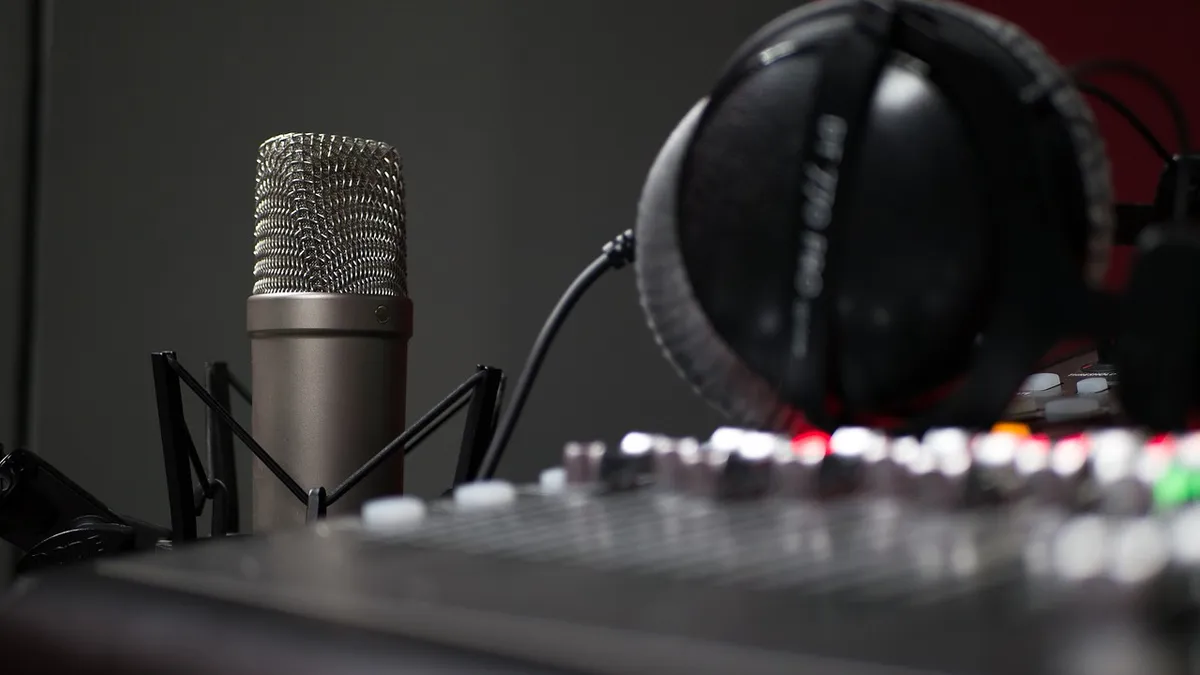After years of exponential growth and multimillion-dollar dealmaking, podcasting is beginning to feel the crunch faced by other tech industries that grew rapidly during the earlier stages of the pandemic. Major platforms that invested heavily in the space have reportedly begun slowing their momentum, freezing budgets and even beginning layoffs.
Spotify last month announced plans to cut about 6% of its employees, while chief content and advertising business officer Dawn Ostroff left the company — two moves that suggest to industry watchers that its $1 billion-plus bet on podcasts was not paying large enough dividends.
Still, podcast listening time continues to rise, as does U.S. podcast advertising revenue, which passed the $1 billion mark in 2021 and is predicted to surpass $4 billion in 2024, according to the Interactive Advertising Bureau (IAB). The pinch felt at companies that perhaps overextended into podcasts tells only part of the story for a channel that has still not hit its full potential.
"Podcasting has gotten to a point of growth and maturity, but it's still evolving and growing," said Elli Dimitroulakos, head of ad innovation for podcast platform Acast. "It's not going away, it's carving its own path and it's trying to break out from underneath audio and stand on its own, because it's outperforming every medium including influencer."
Podcast advertising evolves
Innovations and investments have gone hand-in-hand during the last several years of the development of podcasts. While investments in content — like Spotify's $200 million deal with Joe Rogan — were noisier, advances around ad tech made more of an impact. Advertisers that initially sought out specific podcasts for host reads and sponsorship opportunities have seen dynamic ad insertion and programmatic ads bring scale and automation to podcast advertising.
"Advertisers now are able to see that power," Dimitroulakos said of the effect of improved podcast tech. "They look at it from a scale and reach play. They can measure the efficacy of that campaign down to the impression level and it helps with discoverability."
Still, of the more than 2 million English-speaking podcasts that are listened to in the U.S., 44% of U.S. advertising investments go to the top 500 shows. Those programs only account for 12% of monthly reach, per data shared by Acast. In effect, U.S. podcast advertisers are missing the opportunity to reach 88% of the addressable podcast audience. Dimitroulakos compared it to an example from the TV ad space.
"Everybody wants a Monday Night Football ad, but there only so many slots — it drives up the CPMs, it gets expensive, the share of voice decreases, there's so much competition in that one slot," she explained. "There are other areas where you can reach that same audience in a more efficient and effective way."
For podcast platforms, helping advertisers take advantage of the large proportion of the podcast audience that is not being monetized could be a rising tide that raises all ships.
While it's easier for a big brand to spend all of its budget on one massive show, too many ads on the same hit programs can drag down performance and raise costs. As platforms work to bundle small- and mid-sized podcasts and audiences, they will open up new inventory that addresses advertiser dissatisfaction with the channel.
"A lot of advertisers are like, 'This podcast channel has kind of changed.' Well, if you're only buying the top shows, it's definitely changed, because you're not getting the bang for the buck that you used to," said Dave Hanley, chief revenue officer at podcast platform Libsyn.
Shift in the industry
Those headline-making deals — and the ones that are reportedly being taken off the table as platforms rein in spending — will likely be less a part of the podcasting space moving forward. Instead, the industry is looking to invest resources around the ability to enable reach, scale and measurement, Dimitroulakos said.
"You're seeing that there's an appetite for investment," she added. "You want to be able to offer the scale for someone like a P&G who would want an $80 million media budget globally, and wants to be able to look at that holistically."
Podcasting can help advertisers break through ad clutter and increase reach. Ad loads in podcasting are lower than those in TV, streaming music and streaming video, increasing share of voice and leading to higher performance and return on ad spend. But advertisers and their agencies also want to be able to buy podcast advertising in the same way they buy other digital advertising through their demand-side platform (DSP) partners.
"We're working with these agencies and figuring out, what are you looking for? What capabilities does your DSP have [around] making those connections and letting them buy the way they want to buy?" Libsyn's Hanley explained.
Along with better buying tools, programmatic could be the key to achieving the scale major advertisers are seeking. The share of podcast spend bought programmatically is projected to nearly triple in the next five years, with marketers most likely to expect 11-15% of podcast ad spend to be transacted programmatically by 2027, per an Acast report. In 2020, programmatic podcast share grew 127%, far outpacing connected TV programmatic spend, which only grew 34%, according to eMarketer. To fully unlock the potential of podcasts, the industry will have to come together to support programmatic buying in an open ecosystem.
"We have to work together to enable additional transparency in programmatic to be able to pass the data, so advertisers can see what they're buying and what the results are from that buy," Dimitroulakos said.
Beyond working to create industry-wide standards with bodies like the IAB, Dimitroulakos said that advertisers must reevaluate how podcast advertising fits in the media mix.
"You have to come with a clear mindset. You cannot come with preconceived notions of what you've done in display, video and streaming, and expect to do the same thing in podcasting and make it an easy transition," she advised. "There's power in podcasting as a standalone medium."























